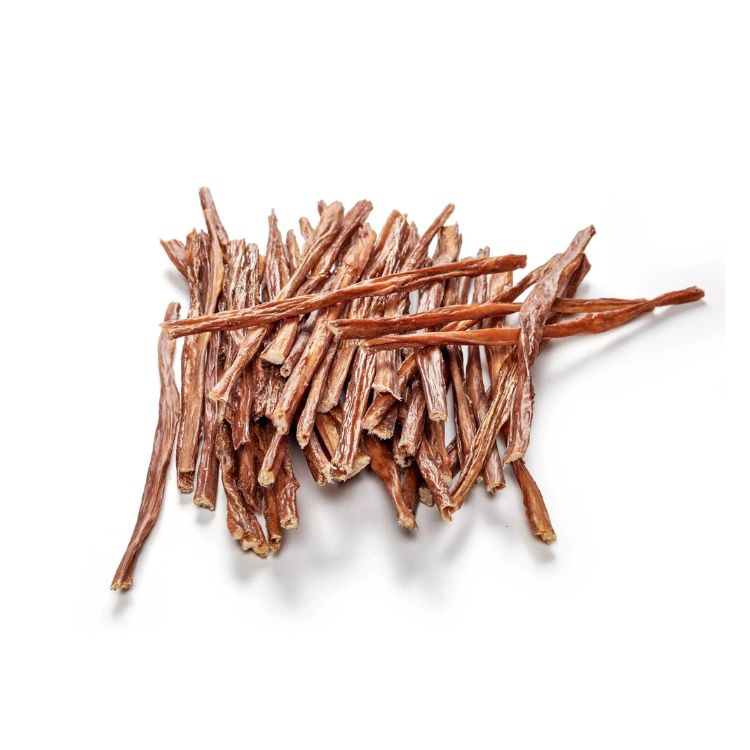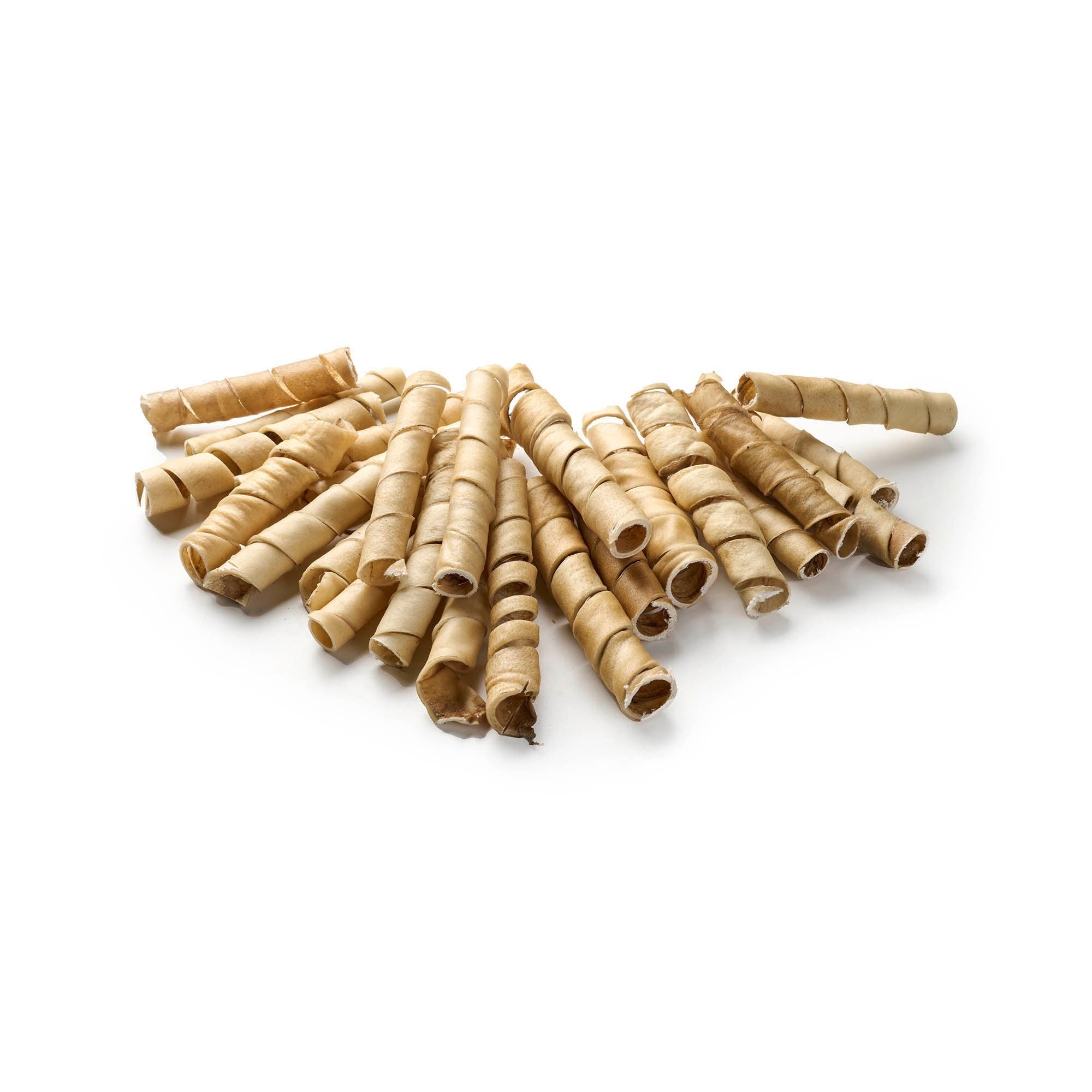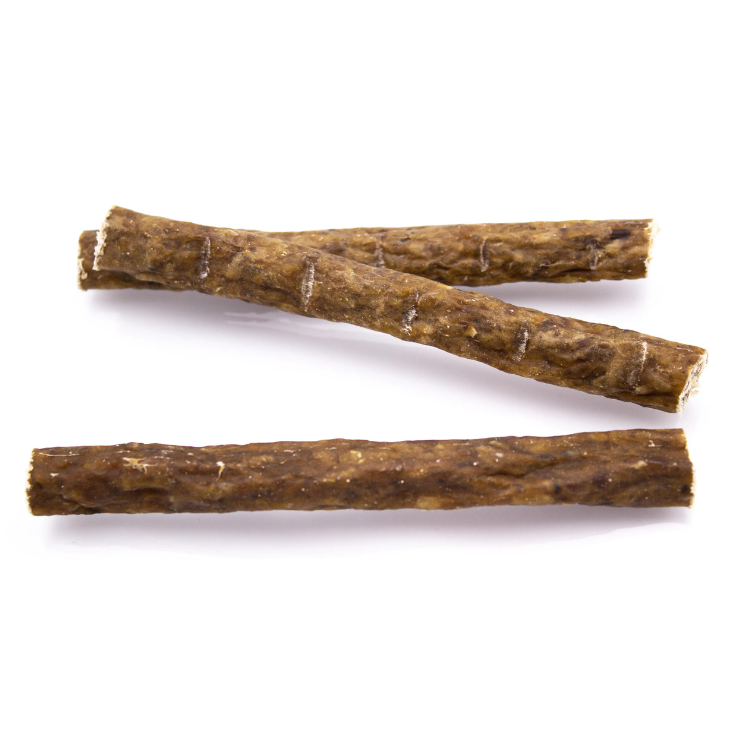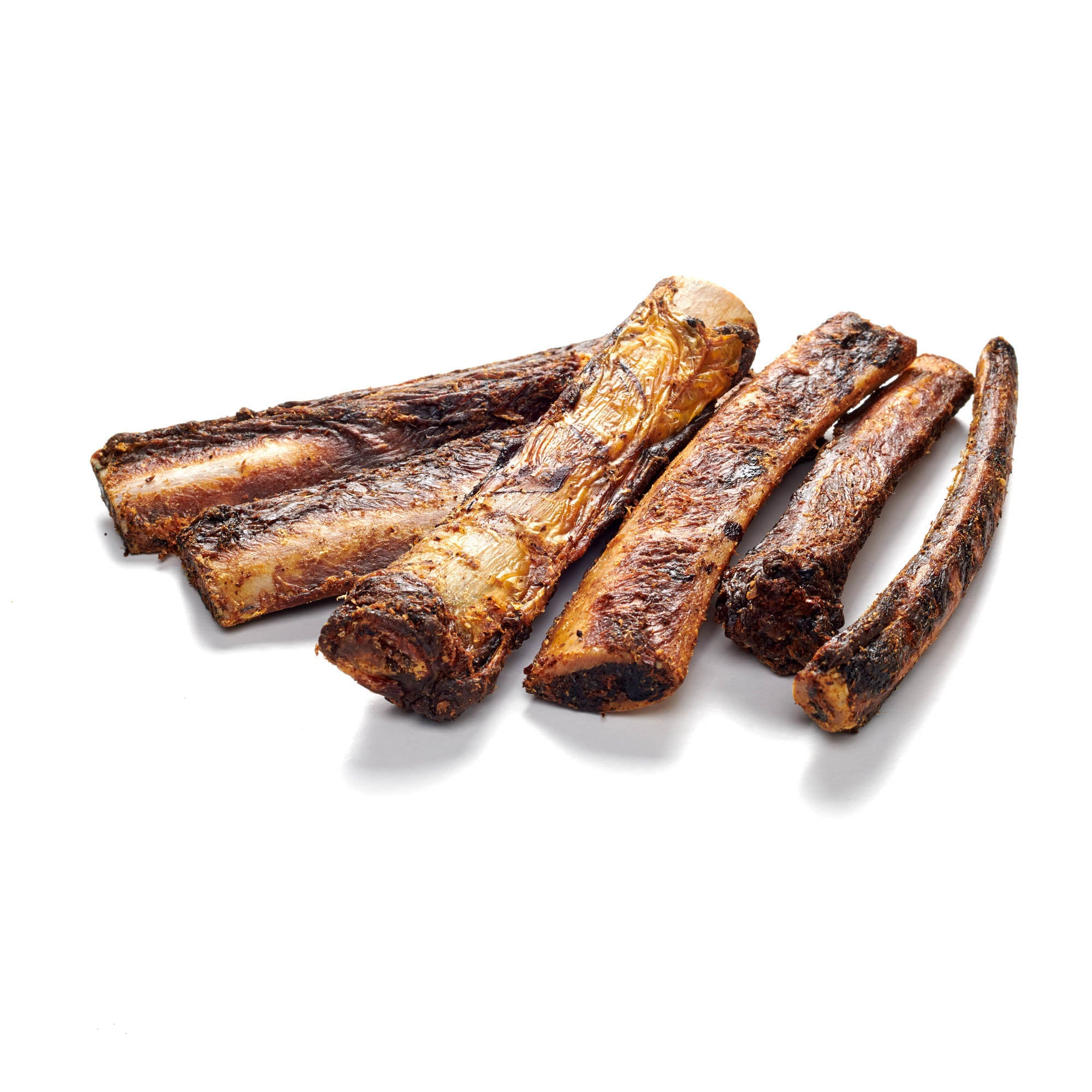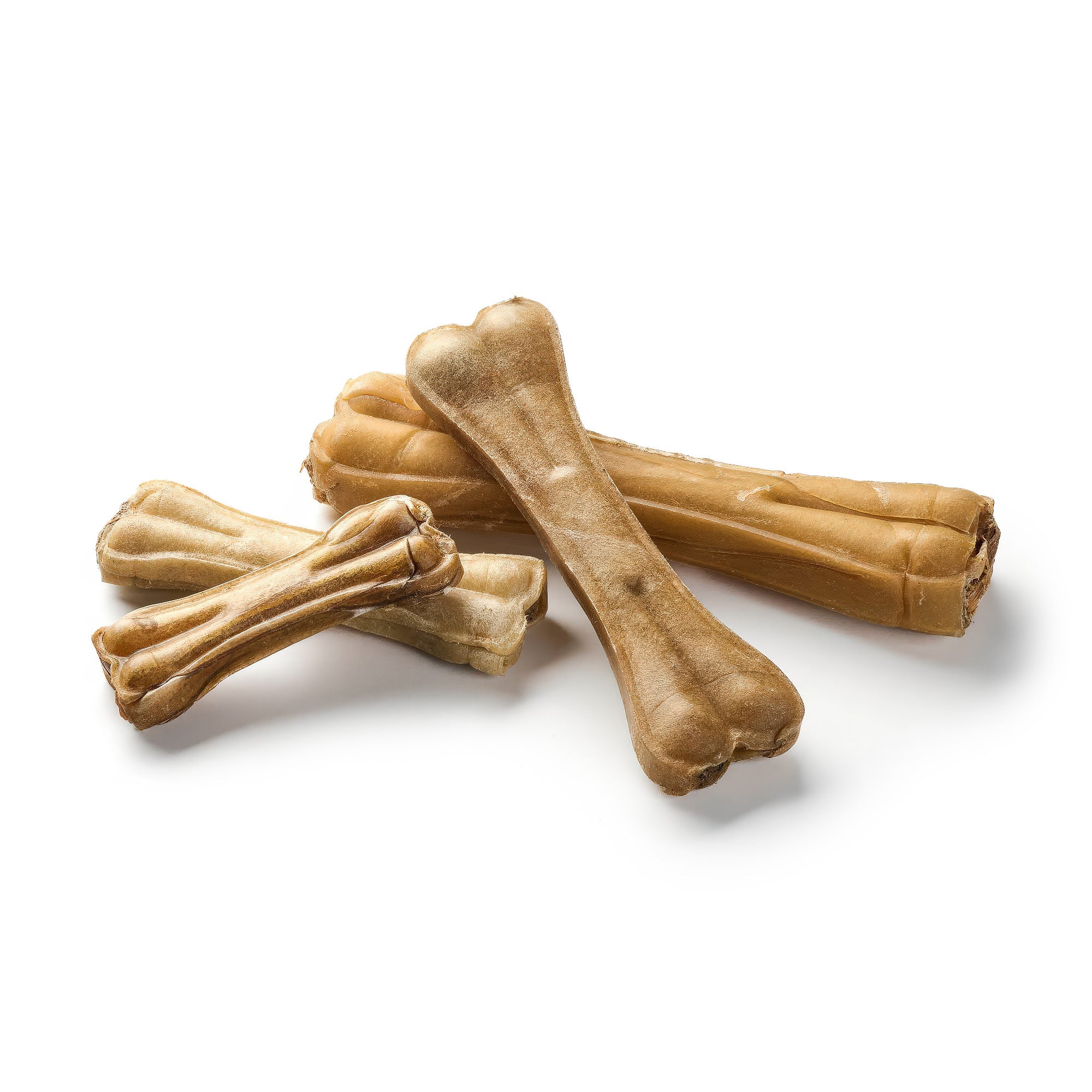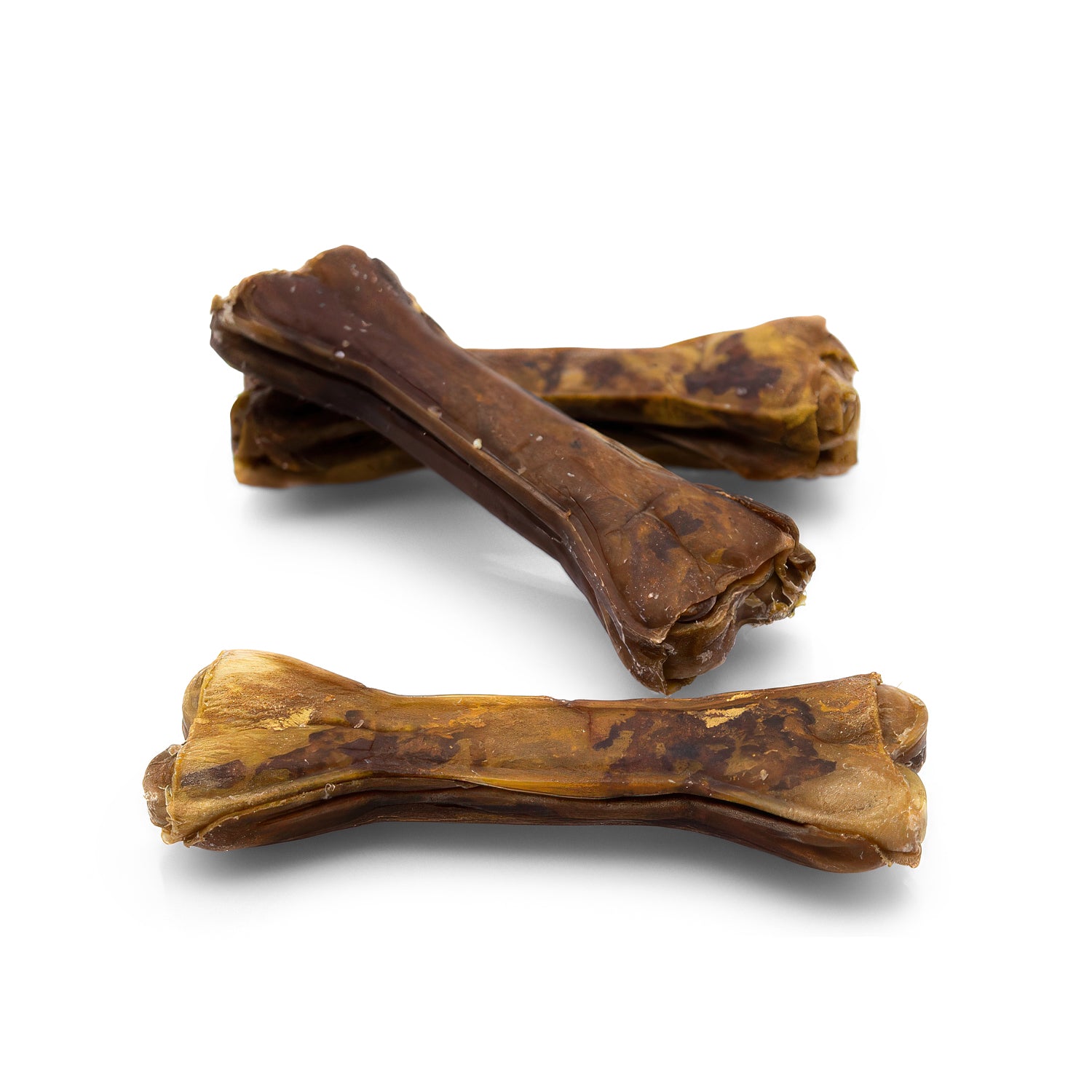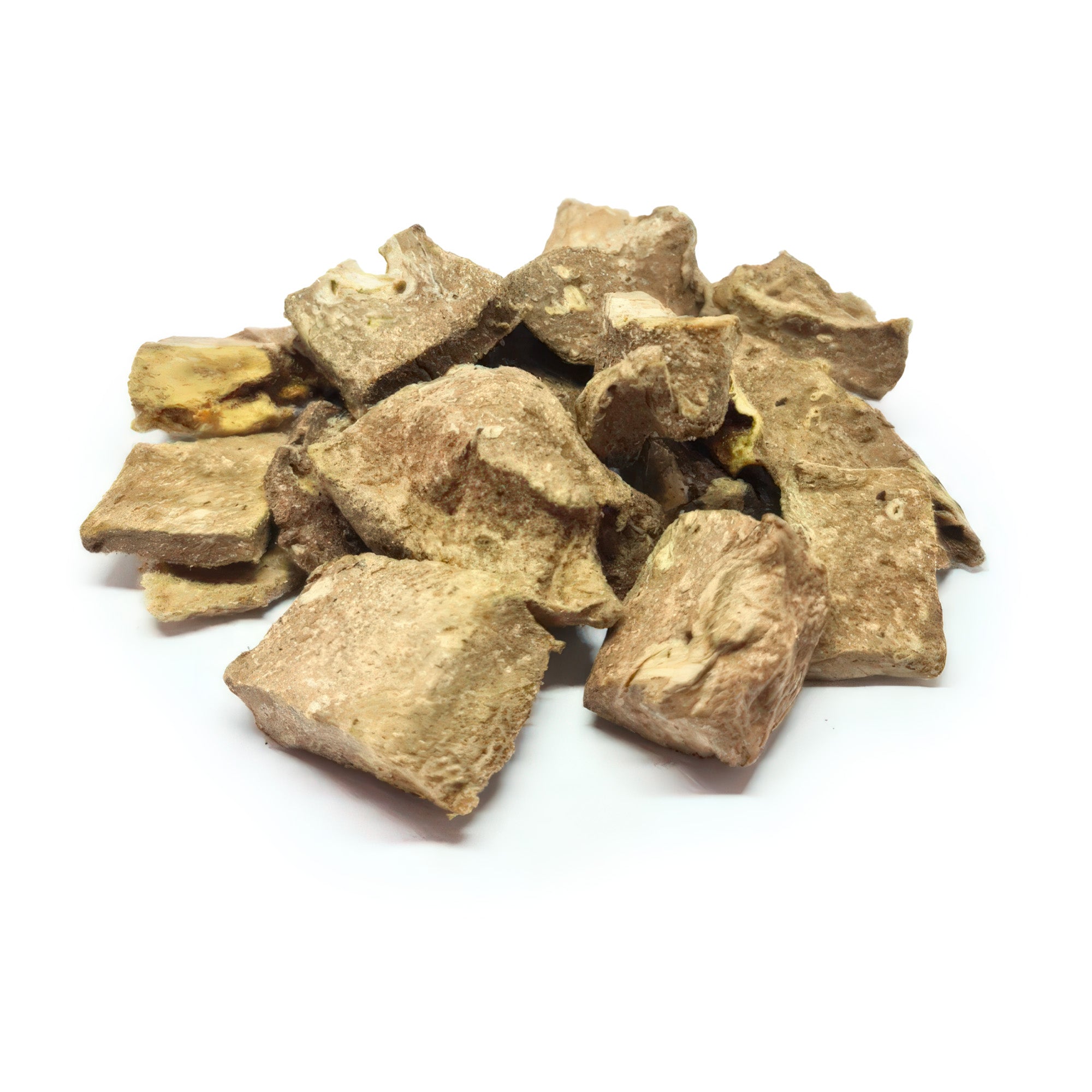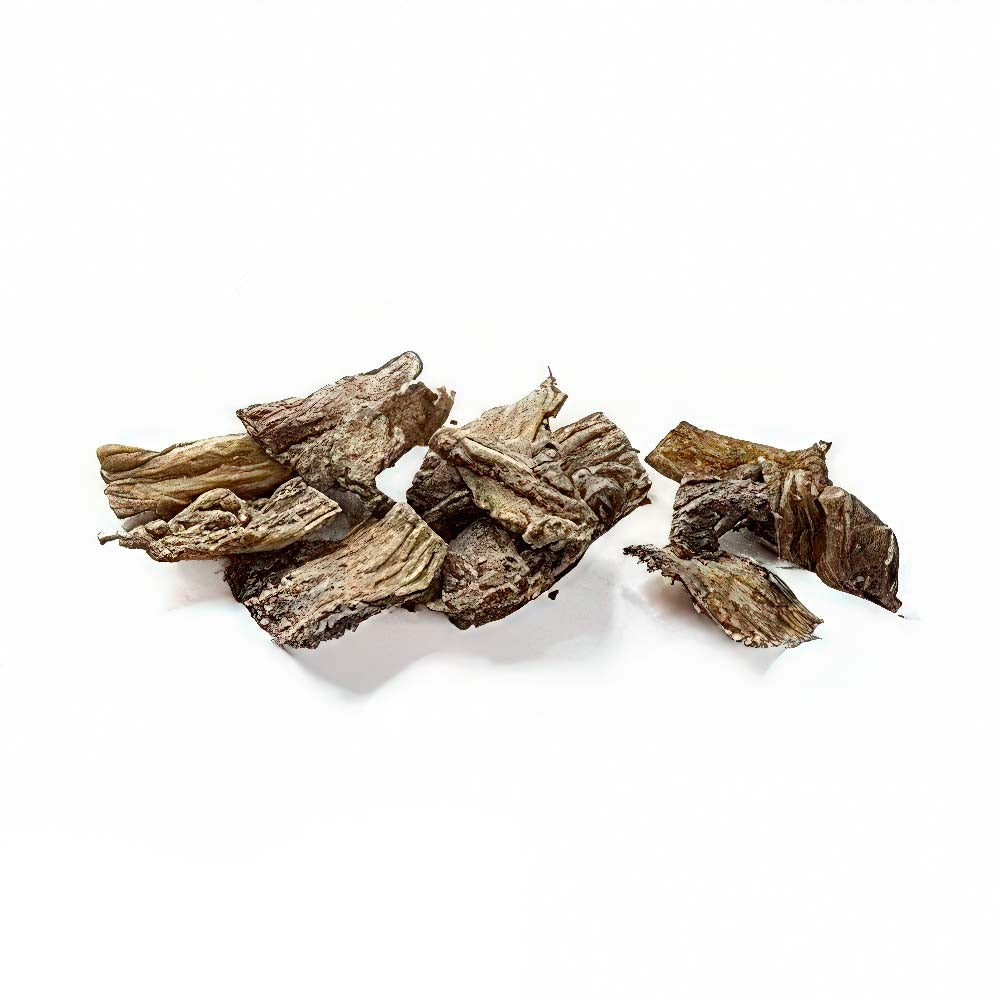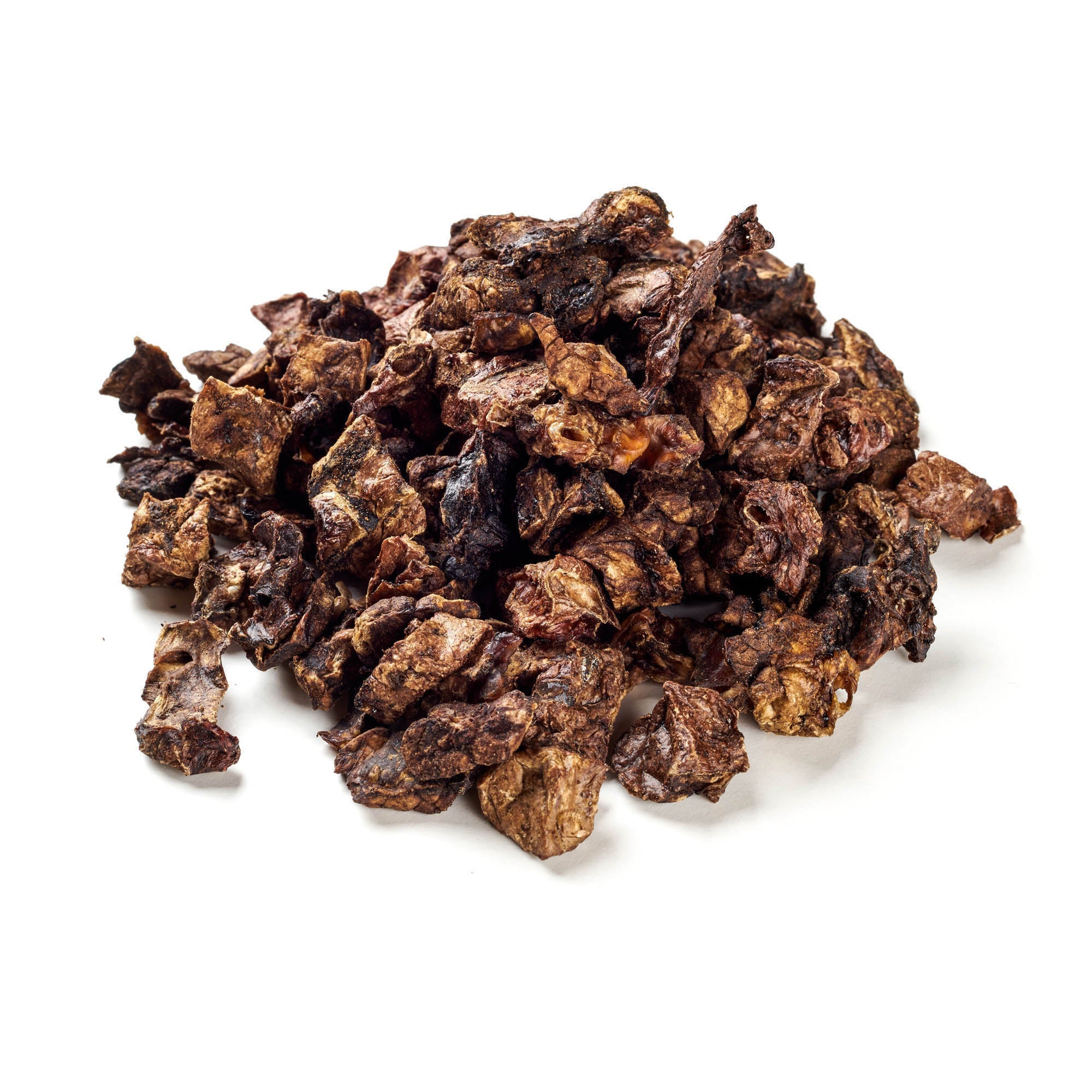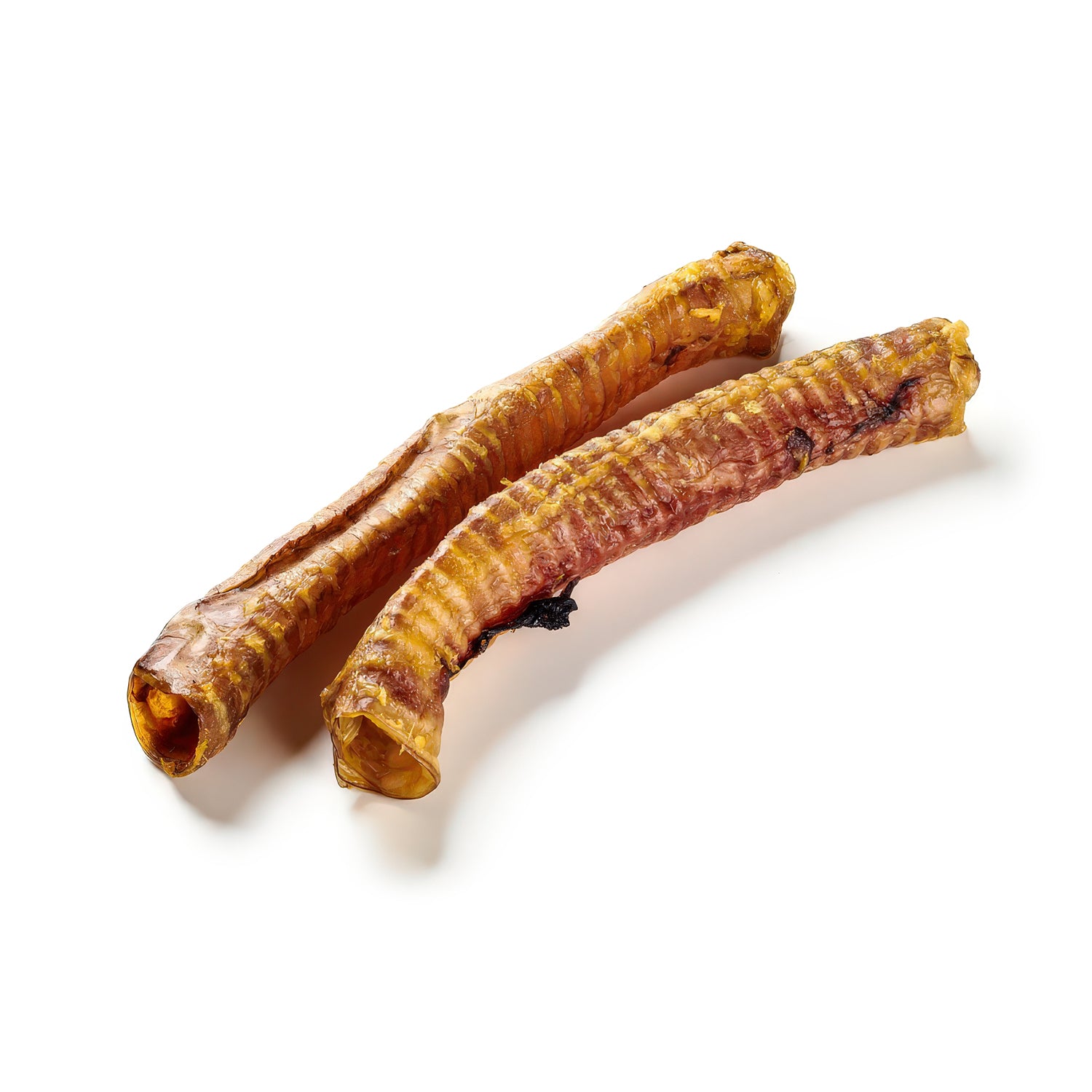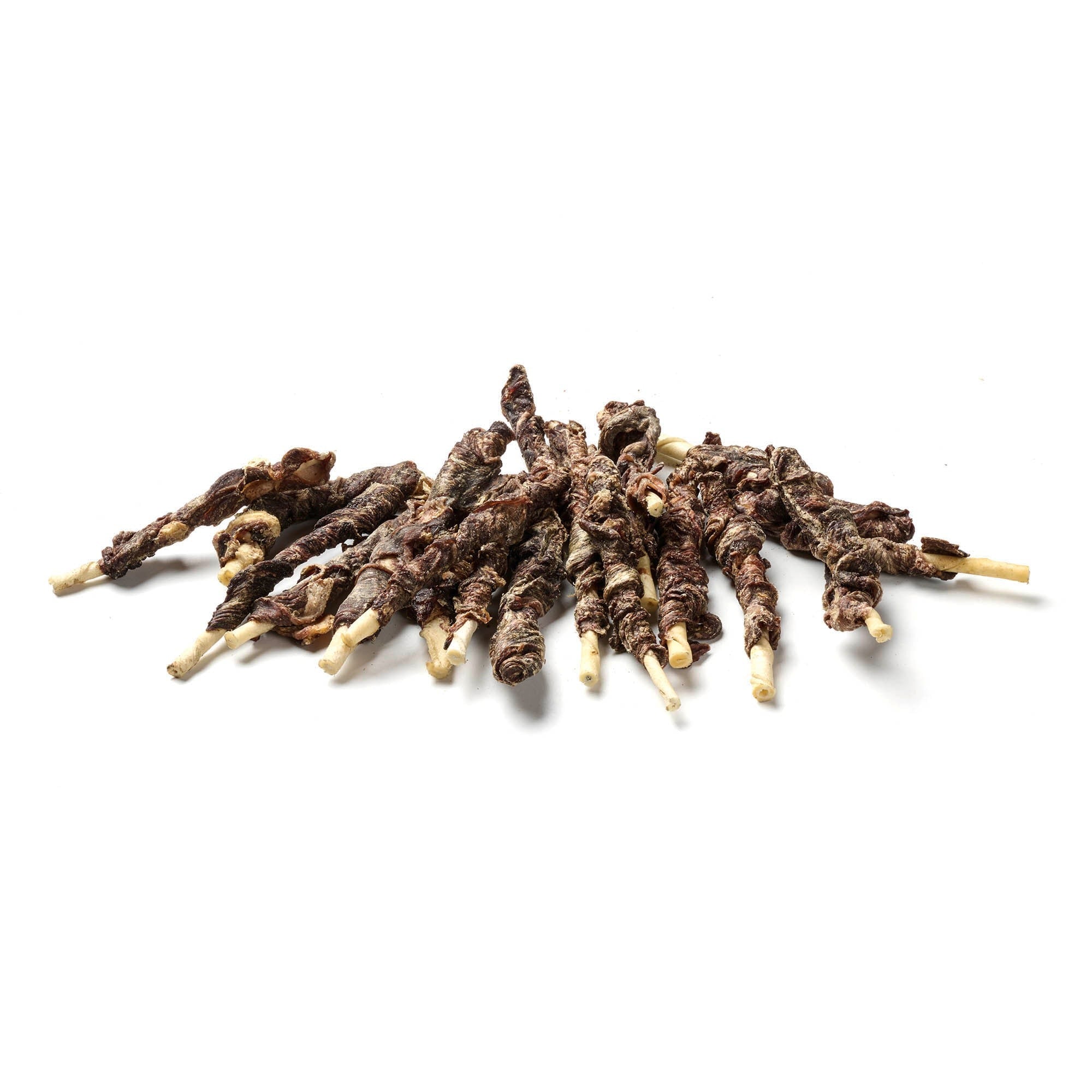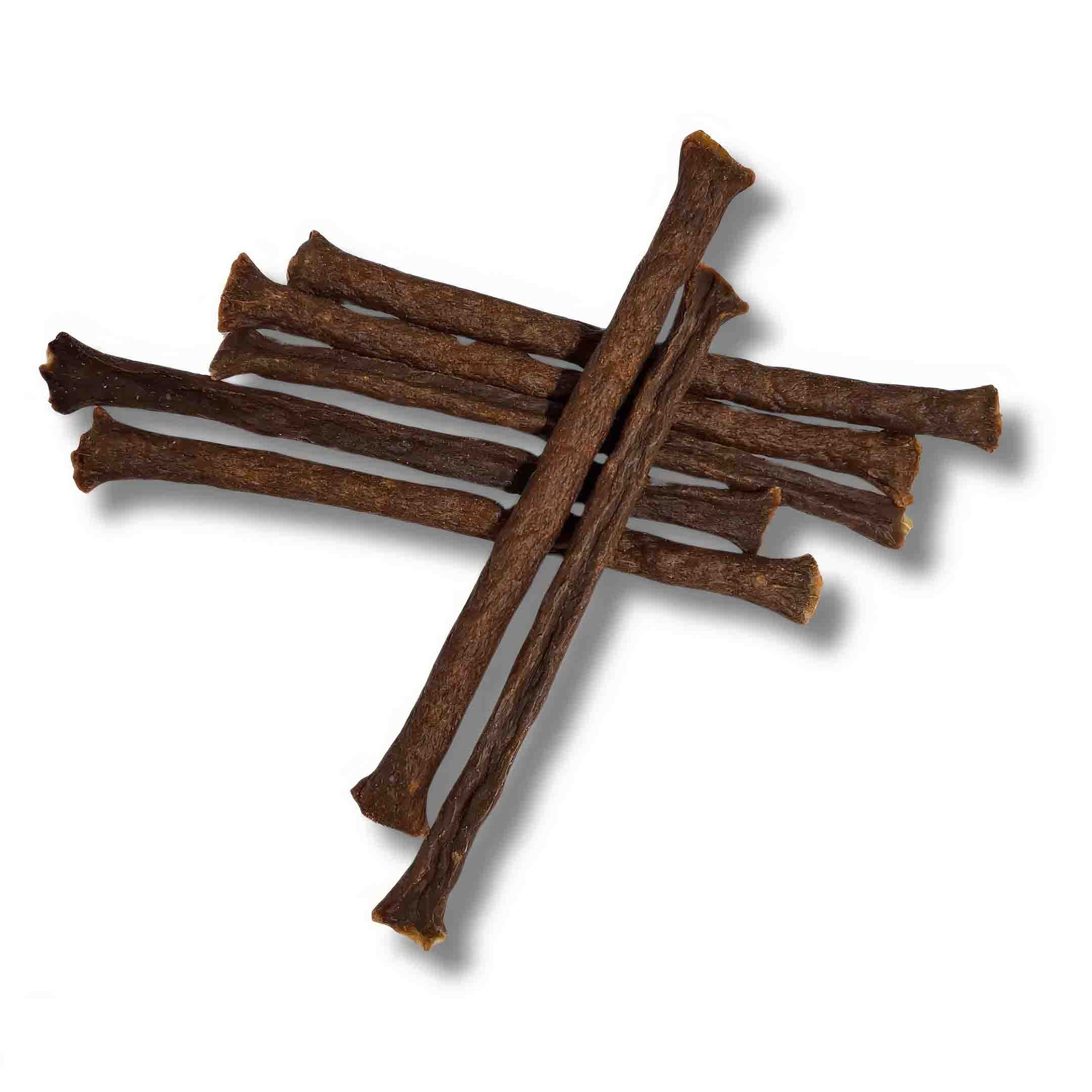
Deer house fly in dogs
Share
A leisurely walk through the forest can be a real adventure for dogs. But amidst all the exciting smells and sounds lurks an inconspicuous little pest - the deer house fly. This tiny but persistent creature is a real nuisance and can make even the calmest dog sweat.
With its flat, brown body and strong legs, the deer house fly looks rather unspectacular. But its abilities are impressive. It loses its wings as soon as it has found a suitable host and then makes itself comfortable in the thick fur. There it sucks blood and causes unpleasant itching. Because of its lifestyle, it is also often referred to as a "flying tick".
Content: Deer house fly in dogs
- Appearance and lifestyle of the deer house fly
- Symptoms of infestation in dogs
- Prevention and protective measures
- Treatment options
- Conclusion
Enjoy moments together with our delicious dog chews!
It is at home in dense undergrowth and wild meadows, always on the lookout for its next victim. Deer are its preferred hosts, but dogs can unfortunately also become acquainted with it. It is astonishing that such a small parasite can have such an impact.
Make your dog happy with our delicious snacks!
Appearance and lifestyle of the deer house fly
The deer house fly, scientifically known as Lipoptena cervi, belongs to the louse fly family. It has a flat, brown body that allows it to easily move through an animal's fur. Its powerful legs are equipped with claws that help it hold on even when its host moves. This fly is originally from the forests, where it mainly attacks deer. However, it will not stop at dogs if it gets the chance.
The stag house fly has a rather unusual life cycle. As soon as it has found a host, it loses its wings in order to better attach itself to the fur. There it feeds on blood and can spend up to several months on the host. Its preferred environment is forests and meadows, where it can easily jump to passing animals. The females lay their eggs on the host, where the larvae hatch and also feed on the host's blood.
Because of its appearance and lifestyle, the deer house fly is often referred to as the "flying tick." Just like ticks , these flies bite into the skin of their host to suck blood. Moreover, once they have attached themselves, they are similarly stubborn and difficult to remove.
Symptoms of infestation in dogs
Suddenly, your dog jumps up in surprise and looks around confusedly at the invisible attacker. This behavior could indicate an infestation of deer house flies, which is extremely unpleasant for dogs. The flies bite to suck blood, which can lead to severe itching and irritation. Typical signs of an infestation are:
- Constant scratching and biting: Your dog will try to reach the itchy areas, which often leads to increased scratching and biting.
- Restlessness: The itching may be so severe that your dog becomes restless and constantly moves to find relief.
- Skin irritation: Redness and inflammation may occur at the bite sites. In some cases, small wounds or scabs may also form.
An infestation with deer house flies can affect your dog's health. The constant itching and skin irritation make it difficult for the dog to rest and can lead to insomnia. Sometimes affected dogs even develop behavioral changes, such as increased irritability or nervousness, because they are constantly distracted by the itching.
Prevention and protective measures
How can you defend yourself against these flying beasts? This is a question that many dog owners ask themselves when they want to protect their four-legged friends from the annoying deer house flies. Fortunately, there are several effective methods to prevent an infestation and ensure your dog's safety. Here are some tried and tested strategies that can help keep these pests at bay.
Regular coat checks
After every walk, you should check your dog's coat thoroughly. Pay particular attention to the areas behind the ears, on the neck and along the back, as flies like to hang out there. A thorough coat check can help to detect and remove flies early, before they attach themselves and bite. A fine-toothed comb can be useful for combing the parasites out of the coat. This check should become a daily routine, especially in the summer months when fly activity is at its highest.
Anti-parasitic agents
Regularly use spot-on products or collars that specifically target parasites such as the deer house fly. These products can help deter the flies and prevent infestation. Spot-on products are applied directly to the dog's skin and often provide weeks of protection. Collars continuously release active ingredients that keep parasites away. In addition, there are sprays and shampoos that can be useful in prevention. It is important to choose products that are well tolerated by the dog and to use them regularly according to the manufacturer's instructions.
Clean environment
Keep your dog's sleeping and resting areas clean. Regularly washing the dog's bed and bedding can help prevent parasites from settling in. Use hot water and, if possible, a clothes dryer to kill eggs and larvae. Regularly vacuuming and cleaning carpets and floors in areas where the dog spends a lot of time can also reduce the likelihood of an infestation. In heavily infested areas, it may be useful to also use special environmental sprays that kill parasites.
Avoiding risk areas
During the months when deer house flies are particularly active, it is advisable to avoid walking in heavily affected forest and meadow areas. Find out about local conditions and choose safe routes.
First-class dog chews for happy sniffing noses available here!
Regular care
Good grooming also helps reduce the risk of infestation. Regularly brushing and bathing your dog not only removes dirt and loose hair, but also possible parasites. It is best to use grooming products that contain insect repellents.
Healthy eating
A balanced and nutrient-rich diet strengthens your dog's immune system and makes him more resistant to diseases caused by parasites. Supplements such as omega-3 fatty acids can improve the skin's appearance and thus reduce susceptibility to diseases. A healthy diet with high-quality ingredients and natural chews , such as beef ears , can support your dog's general well-being and health.
Treatment options
Despite all precautions, your dog can still become infested with deer house flies. Such an infestation is not only annoying, but can also cause considerable discomfort for your four-legged friend. Fortunately, there are various measures you can take to help your dog quickly and effectively and provide him with relief.
Grooming
Gently remove the flies from your dog's coat using a fine-toothed comb. Be sure to remove the flies completely to prevent re-infestation. A thorough grooming routine can help keep the infestation under control and prevent further problems. It is important to proceed gently so as not to cause additional stress to the dog.
disinfection
Clean the bite area with a mild disinfectant to avoid infection. If the skin is very irritated, a soothing ointment can also help. There are special skin care products for dogs that have antibacterial and anti-inflammatory properties. These can help the skin to recover faster and reduce itching.
Visit to the vet
If the infestation is severe or symptoms persist, a visit to the vet is advisable. The vet can prescribe special medications that work against the deer house flies and relieve the itching. In some cases, oral medications are necessary to achieve a systemic effect and effectively combat the infestation. The vet can also make an accurate diagnosis and give further treatment recommendations.
Soothing baths
A soothing bath with special shampoos designed for dogs can help relieve itching and nourish the skin. These shampoos often contain natural ingredients such as oatmeal or aloe vera that soothe irritated skin and reduce inflammation. Make sure to rinse the coat well to remove any residue.
Controlled environment
During treatment, your dog's environment should also be kept clean. Wash all blankets, pillows and toys that your dog comes into contact with to ensure that no flies or larvae remain. A thorough cleaning of the living area can help to get the infestation under control more quickly.
By combining these measures, you can provide quick relief to your dog and prevent deer house flies from becoming a persistent problem.
Conclusion
The deer house fly may be small and inconspicuous, but its impact on dogs can be significant. These flying parasites, which nest in the fur of our four-legged friends, can cause considerable itching and discomfort. A pleasant walk through the woods can therefore quickly become an unpleasant experience for the dog if it is plagued by these pests.
A thorough understanding of the deer house fly, its lifestyle and its effects is crucial to effectively combating it. Regular coat checks after every walk, the use of anti-parasitic products and maintaining a clean environment are basic measures to prevent an infestation. Complemented by a balanced diet and natural chews, the dog's immune system can be strengthened, increasing its resistance to parasites.
Should an infestation occur, there are many proven treatment options, ranging from careful grooming and disinfection of the bite sites to soothing baths and a visit to the vet. A clean and controlled environment supports the healing process and helps prevent future infestations.
With these preventative and therapeutic measures, you can ensure that your dog stays protected and healthy so that you can continue to enjoy your outdoor adventures together without worry. Prevention and attention are the key to keeping the deer house fly at bay and ensuring your dog's well-being.
Bring joy to your dog's day with our treats!

